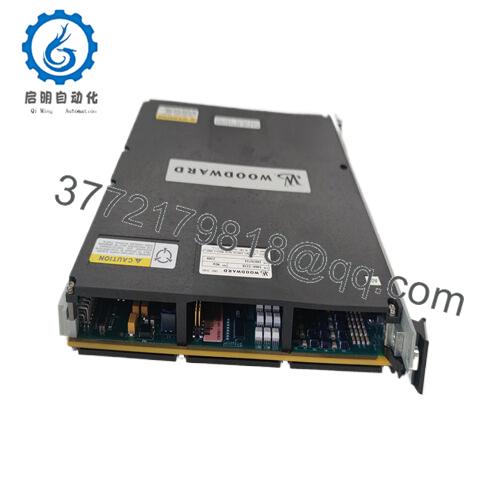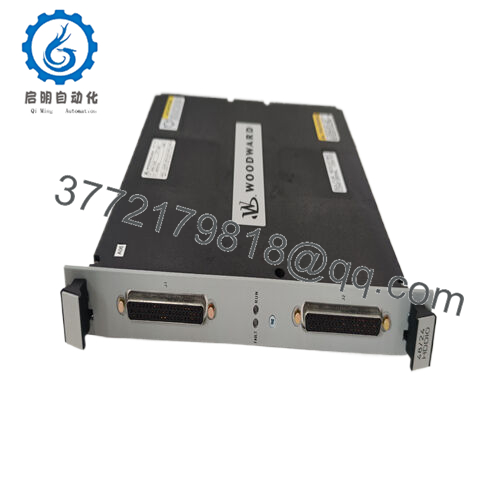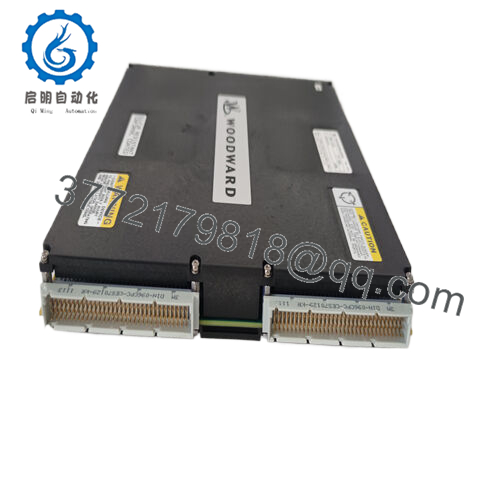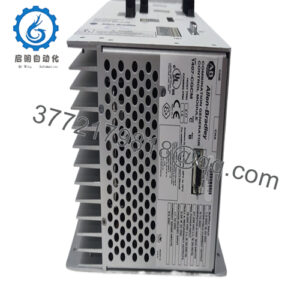Description
In the high-stakes world of industrial automation, particularly in gas turbine control for power generation and aerospace applications, maintaining precise actuator positioning under extreme conditions is a constant challenge. The Woodward 5466-1158 addresses this by serving as a high-density analog I/O module designed for exacting turbine control, ensuring signal reliability where milliseconds matter. Imagine a combined-cycle power plant or an aircraft test stand—any deviation in fuel flow or blade pitch can lead to efficiency losses, mechanical stress, or catastrophic failure. This module is critical in such environments, where high reliability and fast data cycles are non-negotiable. It tackles the problem of managing multiple analog signals in a compact footprint, reducing the risk of noise-induced errors that plague traditional I/O setups. For engineers upgrading legacy systems or designing new turbine controls, the Woodward 5466-1158 delivers seamless modular integration, minimizing downtime and enhancing process control stability. Its robust design thrives in harsh conditions, ensuring I/O signal integrity despite electromagnetic interference or thermal extremes, making it a cornerstone for industrial automation where precision drives performance.
The Woodward 5466-1158 operates within the MicroNet Plus platform, sitting in the I/O layer of the automation stack to handle high-density analog inputs and outputs for turbine actuators, sensors, and control loops. It processes up to 16 analog inputs (4-20 mA or 0-5 V) and 8 outputs per module, feeding real-time data to the MicroNet CPU for precise control of fuel valves, variable geometry, or bleed air systems. Integrated into a chassis-based backplane, it communicates via a high-speed CAN bus, ensuring low-latency data transfer to the DCS or SCADA systems. Its built-in diagnostics monitor signal health, detecting anomalies like open circuits or drift, which are relayed through Modbus or Ethernet for proactive maintenance. The module supports redundancy by pairing with a duplicate unit in critical setups, enabling seamless failover without disrupting turbine operation. Positioned between field devices and the control logic, the Woodward 5466-1158 isolates noisy environments with robust shielding, simplifying integration into existing I/O architectures. Engineers can configure scaling and fault thresholds via Woodward’s GAP software, tailoring performance to specific turbine profiles without extensive rewiring, making it a versatile fit for dynamic process control environments.
| Specification | Details |
|---|---|
| Model Number | 5466-1158 |
| Brand | Woodward |
| Type | High-Density Analog I/O Module |
| Input Voltage | 18-36 Vdc |
| Operating Temp Range | -40°C to +85°C |
| Mounting Style | Chassis/Backplane Mount |
| Dimensions | 305 x 152 x 38 mm |
| Weight | 1.8 kg |
| Interface/Bus | CAN, Ethernet |
| Compliance | CE, UL, ATEX |
| Supported Protocols | Modbus, CANopen |
| Typical Power Draw | 12 W |
Choosing the Woodward 5466-1158 equips your turbine control system with unmatched precision, engineered for consistent signal processing that withstands the rigors of continuous operation in high-vibration or thermally challenging environments. Its high-density design maximizes I/O capacity without sprawling rack space, reducing installation complexity and enabling compact control rooms that save on infrastructure costs. This efficiency extends to maintenance, where real-time diagnostics pinpoint issues like signal drift before they escalate, allowing planned interventions that preserve critical system uptime.
The module’s redundancy capabilities ensure operational continuity, a game-changer for power plants where downtime translates to revenue loss or for aerospace testing where safety is paramount. By streamlining integration with plug-and-play compatibility, the Woodward 5466-1158 cuts engineering overhead, letting teams focus on optimizing turbine performance rather than wrestling with I/O mismatches. Its ability to handle diverse analog signals—current or voltage—means it adapts to varied sensors without custom interfaces, enhancing flexibility in mixed-equipment settings. Ultimately, this module delivers long-term performance by reducing wear on actuators through precise control, lowering fuel consumption and emissions while meeting stringent compliance standards, making it a strategic choice for forward-thinking automation professionals.
- 5466-1158
The Woodward 5466-1158 is a workhorse in power generation, used in gas turbine control rooms to manage fuel and air systems, ensuring fast data cycles for load following in grid-critical applications under extreme thermal and electrical noise conditions. In aerospace test facilities, it handles actuator signals for jet engine simulations, delivering high-reliability I/O to maintain precise thrust control in high-vibration environments. For oil and gas compressor stations, the module supports variable geometry control, providing signal integrity in corrosive, explosion-prone settings to ensure process control stability.
5466-1115 – Lower-density I/O variant for smaller turbine applications
5466-1168 – Enhanced Ethernet model for advanced network integration
5466-1035 – Predecessor with basic analog I/O for legacy upgrades
5501-432 – Companion actuator controller for paired precision control
5466-1145 – Digital-focused I/O alternative for mixed signal setups
9907-252 – Load-sharing module for multi-turbine synchronization
5466-1247 – High-speed variant for ultra-fast response applications
5466-1159 – Redundant I/O model for mission-critical failover
Before installing the Woodward 5466-1158, verify your MicroNet chassis supports the module’s CAN bus version and that your power supply delivers a stable 18-36 Vdc—undervoltage can trigger reset faults. Check sensor compatibility, ensuring 4-20 mA or 0-5 V outputs align with your transducers, and allocate sufficient rack ventilation to manage heat in dense configurations. Preload GAP software with the latest module firmware to access optimized signal scaling options.
Maintenance involves routine checks of diagnostic LEDs every three months for channel status, alongside annual inspections of backplane connectors for wear or dust buildup in humid environments. Run semi-annual self-tests via GAP to validate input accuracy, logging any offset errors for calibration. In redundant setups, cycle the active module yearly to balance runtime, always isolating power to avoid transients. These practical steps, rooted in field experience, keep the Woodward 5466-1158 performing reliably without demanding excessive attention.




 WhatsApp: +86 16626708626
WhatsApp: +86 16626708626 Email:
Email:  Phone: +86 16626708626
Phone: +86 16626708626


